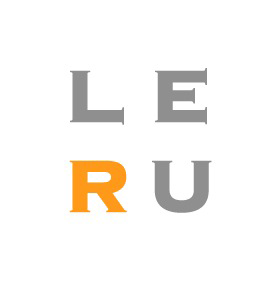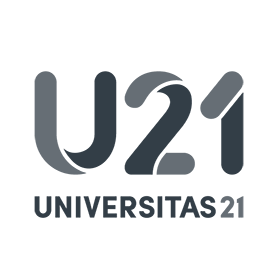Event
Thesis defense: Exploiting multiple antennas in maritime radio channels.
Published: 2025-06-09
Zoom link
Link to thesis in LUCRIS
Reliable maritime communication systems are essential for both safety-critical operations and emerging applications such as autonomous shipping, remote pilotage, and drone-assisted search and rescue. These scenarios demand ultra-reliable, low-latency wireless connectivity, where communication outages are unacceptable. Equally important is the need for dependable positioning systems. In situations where GNSS (Global Navigation Satellite System) signals are unreliable, a robust backup positioning solution is essential. Recent wireless technology trends, such as massive multiple-input multiple-output (MIMO) in fifth-generation (5G) and distributed MIMO in future sixth-generation (6G) networks, involve the deployment of large-scale antenna arrays to enhance reliability and capacity. Inspired by these developments, this thesis investigates the use of multiple antennas in maritime radio channels to improve both communication reliability and positioning capability. The investigation focuses on sea surface fading mitigation and ranging, supported by both theoretical analysis and real-world measurements. A high-performance wideband distributed massive MIMO channel sounder operating in the 5 GHz band was developed to support this research. The sounder is also well-suited for broader 6G research, including distributed MIMO and joint communication and sensing. The thesis demonstrates that deploying multiple antennas, particularly in vertical configurations, yields significant advantages for maritime wireless systems. Through a combination of analytical modeling and empirical measurements, it shows that vertical antenna arrays can effectively mitigate deep fading caused by sea surface reflections. Closed-form expressions based on the two-ray model are derived to identify optimal antenna spacing and array configurations and to provide practical design insights. Experimental validation in open-sea environments confirms that even arrays of only three elements can enhance link reliability by up to 15 dB. Furthermore, the two-ray model is extended to enable GNSS-independent ranging between vessels and base stations on land without requiring time synchronization, achieving sub-10-meter accuracy with eight vertically distributed antennas, offering a viable independent positioning method.
| When: | 2025-06-13 09:15 to 2025-06-13 13:11 |
| Location: | E:1406 |
| Contact: | michiel.sandra@eit.lth.se |
Thesis defense: Code-based Cryptography: Attacking and Constructing Cryptographic Systems
Published: 2025-05-26
Zoom link.
Link to Thesis in LU Research Portal.
We analyze several lightweight code-based cryptosystems in the first three works, ranging from stream ciphers to wPRFs and authentication protocols. We investigate the design weaknesses that allow us to launch attacks using various techniques. In particular, we analyze a novel LPN-based stream cipher called Firekite, a wPRFs construction, and an HB-like authentication protocol named LCMQ. Using diverse techniques in conjunction with information-set decoding algorithms (ISD), our studies improve previous results (if any) and impose stronger security parameters for said constructions. Then, we draw connections between lattice-solving algorithms and traditional syndrome decoding algorithms with our new proposal: a sieving-style ISD algorithm. Our algorithm offers a novel time-memory trade-off in solving relevant code-based parameters. In the low error-weight regime, the sieving-style ISD can use memory more efficiently without losing its competitiveness in computational performance. Thus, we introduce a valuable and practical alternative to cryptanalysis. The last two papers look at the novel RSDP problem from a new perspective - the Oracle model, analogous to the LWE or LPN problems. We construct an HB-like authentication protocol, replacing the LPN problem with the (Oracle)
RSDP problem, showing its remarkable adaptiveness to the most secure designs. In practice, RSDP structures allow incredibly efficient operations, rivaling those of LPN. Moreover, RSDP also achieves high-security guarantees with modest parameters, yielding significant superiority regarding communication cost. Finally, we expand the cryptanalysis of the RSDP problem, especially when many RSDP samples are allowed with a BKW-style solver. We analyze the concrete complexity of RSDP in new regimes outside of CROSS parameters. Hence, our work is a useful calibrating tool for similar RSDP-based cryptosystems in the future.
| When: | 2025-06-12 09:15 to 2025-06-12 13:00 |
| Location: | E:1406 |
| Contact: | vu.nguyen@eit.lth.se |
Thesis defense: Moving towards cognitive radio access networks: transforming MIMO complexities into opportunities
Published: 2025-05-20
Dino Pjani? defends his thesis.
Zoom link.
Link to thesis in LU Research Portal.
The introduction of Multiple-Input Multiple-Output (MIMO) systems has dramatically transformed wireless communication systems, in particular in the Fifth Generation (5G) New Radio (NR) systems, fundamentally changing how signals are transmitted and received. MIMO technology deploys numerous antennas to transmit and receive multiple data streams simultaneously. The presence of obstructions and scatterers in wireless environments, varying in location, size, and shape, contributes to a high-dimensional feature space. As user devices move, the interaction of electromagnetic radio waves with surrounding objects and devices generates distinct patterns, called spatial fingerprints. By analyzing the behavior of the radio channel in real time through these spatial fingerprints and their temporal evolution, MIMO systems unlock significant opportunities for deeper insight into channel dynamics. These insights lay the groundwork for previously unforeseen functionalities in the Radio Access Network (RAN) domain of cellular networks, moving beyond the constraints of traditional approaches based on mathematical models and solutions.
| When: | 2025-06-05 09:15 to 2025-06-05 13:00 |
| Location: | E:1406 |
| Contact: | dino.pjanic@eit.lth.se |
Thesis defense: Principles and Solutions for Improved Availability and Code Vulnerability Detection
Published: 2025-05-06
Syafiq Al Atiiq defends his thesis "Principles and Solutions for Improved Availability and Code Vulnerability Detection".
Link to thesis in LUCRIS.
Zoom link.
Zoom ID: 68034306533
His research explored the following question: how do we ensure our system remains available when facing attacks or failures?
He focused on three areas. First, he developed protocols for Internet of Things (IoT) devices, shielding these resource-limited devices from being overwhelmed by malicious traffic and help them recover after compromise. Second, he investigated security vulnerabilities in 5G networks, particularly in their AI-driven mobility prediction systems. He showed that even a small number of fake devices can significantly reduce prediction accuracy and identified strategies to make these systems more resilient. Finally, he explored how artificial intelligence can automatically detect vulnerabilities in software before they become security problems. His research revealed that different programming languages and vulnerability types perform variably.
| When: | 2025-05-16 13:15 to 2025-05-16 17:00 |
| Location: | E:1406 |
| Contact: | syafiq_al.atiiq@eit.lth.se |
LTH AI and Digitalization Breakfast Seminar: Sustainability perspectives towards distributed MIMO for 6G systems
Published: 2025-04-28
For free breakfast at the seminar, please sign up Here no later than May 4th.
Sustainability perspectives towards distributed MIMO for 6G systems
Speaker: Sara Willhammar, EIT
Abstract: This talk presents early results of an exploratory work and a high-level conceptual framework aiming at providing a structured way of how to qualitatively integrate sustainability perspectives in technology development. We analyze aspects of 6G systems in terms of environmental, social and economic sustainability, from the dimensions of ?sustainable 6G? and ?6G for sustainability?. This sustainability framework is then applied to distributed MIMO, one of the candidate technologies for 6G, to outline challenges and opportunities that should be considered in the development of the technology to be used for 6G systems.
Speaker Bio: Sara Willhammar is a Postdoc at the Department of Electrical and Information Technology at Lund University, Sweden. She received her dual Ph.D. degree in Electrical Engineering from Lund University, Sweden and KU Leuven, Belgium in 2022, and her M.Sc. degree in Electrical Engineering from Lund University, Sweden, in 2017. Her research interests are within channel measurements, characterization and modeling for next generation wireless systems. She also has an interest in the broader field of wireless communication in terms of exploring sustainability perspectives in the development of such systems.
| When: | 2025-05-06 09:00 to 2025-05-06 10:00 |
| Location: | Math building, MH:333 (third floor) |
| Contact: | susanna.lonnqvist@eit.lth.se |

